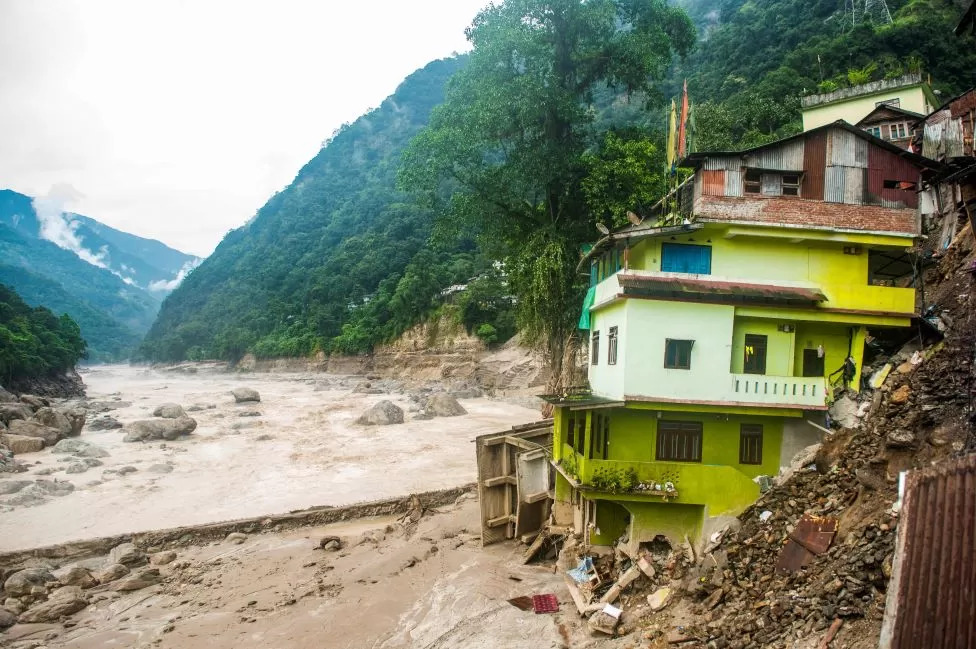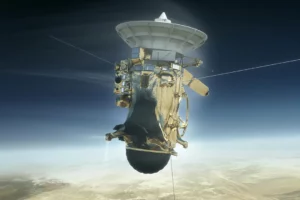A deadly flash flood in the north-east state of Sikkim shows why India urgently needs to install advanced early warning systems for its dangerous glacial lakes, experts say.
At least 70 people – including nine soldiers – have died, and more than 100 others are missing after South Lhonak, a glacial lake in the Himalayas, burst its banks last week.
Such outbursts – or the sudden release of water from a lake fed by a glacier – can be triggered by heavy rains, earthquakes or avalanches.
An early warning system can help authorities evacuate people in time and open the flood gates from dams downstream to minimise damage.
After the Sikkim disaster, India’s National Disaster Management Authority (NDMA) revealed that in early September it had surveyed two at-risk lakes in order to deploy early warning systems for real-time alerts in the event of glacial lake outbursts.
One of lakes surveyed was at South Lhonak, where some work for early warnings were initiated, the BBC has learnt.
But the flood just weeks later has made people question why there was no functioning early warning system in place already, especially since the lake has long been known to be dangerous.
What caused the outburst at South Lhonak remains unclear. Some say it may have resulted from a cloudburst, while others say there was no such heavy concentrated rainfall.
They attribute the disaster to the failure of the moraines, characterised by loose boulders, rocks and soil at the edge of the glacial lake. Some have even linked it to an earthquake.
Several studies had warned that there was a high possibility of South Lhonak lake flooding.
The lake’s area had expanded more than 2.5 times in the past three decades because of a rapidly melting glacier that feeds it. In 2016, authorities drew out some of the lake’s water to prevent it from overflowing. But an early warning system wasn’t set up.
People working at the Chungthang dam, which is downstream of the Teesta river and collapsed because of the flood, told local media that when they received orders to open the dam’s floodgates it was too late – flood waters had already started hitting the infrastructure.
Experts say global warming is causing glaciers to melt faster and this has led to an increase in the water levels of several Himalayan lakes.
It has also led to new lakes being formed or old lakes fusing together. These lakes have become dangerous as they could flood due to rockfalls, cloudbursts or avalanches.
The NDMA says it has plans “to install early warning systems for real-time alerts at most of 56 at-risk glacial lakes in India”.
The International Centre for Integrated Mountain Development, an NGO specialising in Himalayan hazards, estimates that up to 200 glacial lakes across the Himalayas are in a dangerous state. In other words, they could burst at any time, just like South Lhonak.
Sikkim alone has more than 700 small and large glacial lakes and experts say around 20 are at risk of bursting.

Dhiren Shrestha, director of Sikkim’s science and technology department, confirmed that Lhonak was being monitored and was identified as dangerous. But he did not reply to the BBC’s questions about why the lake didn’t have an early warning system and how warnings had been issued to settlements and key buildings downstream after the lake begin to flood.
None of India’s other federal agencies, including the NDMA, the Central Water Commission or Ministry of Water Resources responded to these questions either.
Switzerland has been helping the NDMA install an early-warning system in South Lhonak. Its embassy in Delhi did not provide the BBC with details or explain why the work was taking so long.
“Perhaps the lack of an early warning system has to do with bureaucracy and also the fact that several national and international agencies are involved in this work [setting up the system],” Rajeev Rajak, a glaciology student at Sikkim University, said.
Some campaigners who have been protesting against the construction of dams on rivers originating in the Himalayas said that South Lhonak lake was sensitive from a defence point of view and this may have slowed down the setting up of a warning system.
“The lake is in the region that borders China’s autonomous region of Tibet, and that certainly entails military sensitivities which means any non-military work will take time,” a campaigner, who didn’t want to be named, said.
But glaciologists say global warming-induced changes are happening very fast in the Himalayas and require constant monitoring and risk-mitigating actions.
“We are running out of time,” Miriam Jackson, a senior cryosphere specialist with the International Centre for Integrated Mountain Development (ICIMOD), said.
“And there is so much to do including monitoring of the lakes, installing early warning systems, getting the local communities involved and checking if the equipment for monitoring and issuing early warning are maintained,” she added.

Meanwhile, the number of factors that make glacial lakes dangerous have increased with the climate becoming warmer.
Traditionally, fast-melting glaciers rapidly filling up glacial lakes were mostly seen as the main problem. But thinning and retreating glaciers have also increasingly meant that the geography of the place becomes unstable, resulting in rockfalls and avalanches.
Scientists say that rising temperatures, leading to rains at higher altitudes where it mostly snowed in the past, are causing geological instability in mountainous regions worldwide, including the Himalayas.
Warming also means thawing of permafrost (land which otherwise remains permanently frozen on mountains) which can lead to slope failures (a slope collapses abruptly due to rain or other factors) that can then cause glacial lakes to flood.
“There’s evidence that the slope that caused the South Lhonak to flood moved faster than it has in years,” says Jacob Steiner, a researcher with ICIMOD.
“Scientists are now looking at slope failures (via satellite images) across all lakes mapping all slopes around all lakes and checking how many of them have moved exceptionally (fast).”
But all that monitoring will only be of use if there are early warning systems in place for when a glacial lake bursts – like South Lhonak did last week.
















